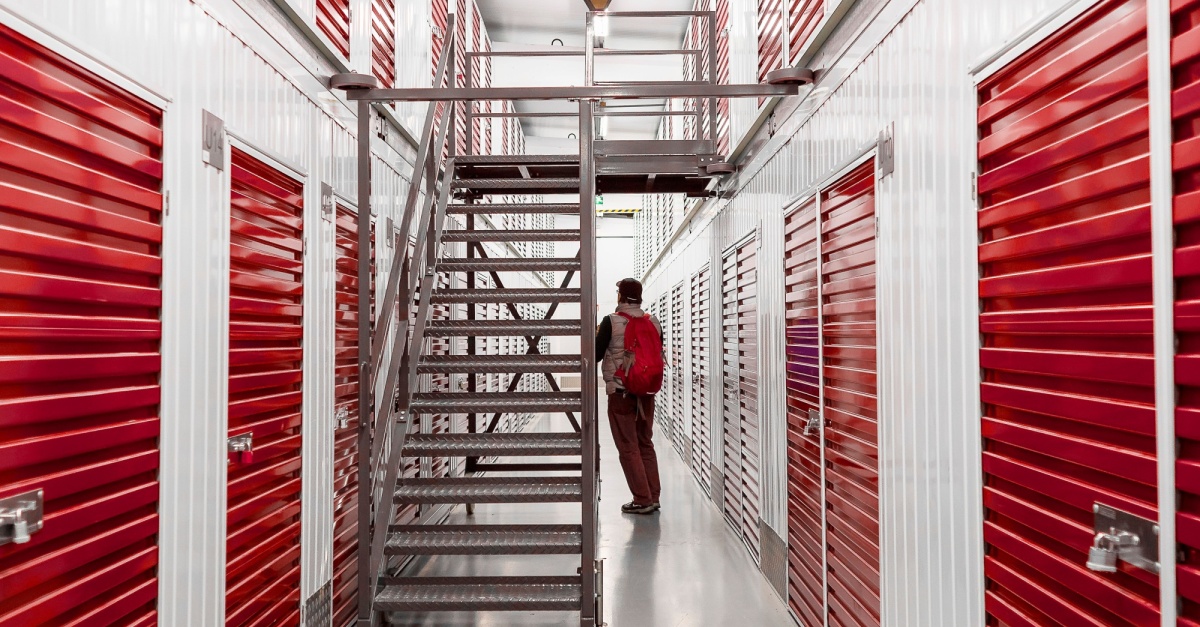
Maximizing Efficiency in Medtail Facility Management
Medtail represents the fusion of medical services within retail environments, combining healthcare offerings such as urgent care, imaging centers, diagnostic labs, and pharmacies with the convenience of familiar shopping destinations. CVS Health’s MinuteClinic locations and Walmart Health Centers are common examples of medtail facilities. By embedding medical services in retail settings, medtail creates a new paradigm that prioritizes patient accessibility and convenience, enabling individuals to address their healthcare needs during routine shopping trips.
This approach not only enhances ease of access but also reduces barriers like long wait times and distant facilities. Medtail blurs the lines between healthcare and consumer retail, offering a seamless experience that fits into busy lifestyles, and has become the primary care provider for 30% of patients. Whether it’s receiving a flu shot while grocery shopping or undergoing diagnostic imaging at a retail complex, medtail simplifies healthcare delivery. By bringing medical services closer to where people live and shop, it bridges the gap between traditional healthcare and the consumer-centric demands of today’s fast-paced world.
The Critical Role of Efficiency in Medtail Facilities
Operational efficiency is essential in medtail to meet patient expectations and manage costs effectively. In this hybrid model, patients demand high-quality medical care delivered with the speed and convenience typical of retail experiences. Achieving this balance requires meticulous planning and management. Medtail facilities must adhere to strict healthcare standards for safety, cleanliness, and compliance while addressing the fast-paced operational demands of retail, such as timely service and customer convenience.
Managing a medtail facility involves handling complex logistics, including negotiating leases to secure prime retail locations, maintaining utilities for optimal operational functionality, and ensuring the facility is accessible and welcoming for patients of all abilities. Additionally, efficient workflows, staff training, and resource allocation are critical to sustaining cost-effectiveness and delivering exceptional service. By streamlining operations and integrating healthcare and retail elements seamlessly, medtail providers can offer a superior patient experience while controlling overhead costs.
Key Challenges in Medtail Facility Management
Medtail facility management faces key challenges in balancing healthcare compliance with retail demands, requiring extensive renovations, privacy measures, accessibility compliance, and navigating complex leasing and shared utility arrangements. Regulations around patient privacy, sanitation, and accessibility necessitate extensive renovations and system modifications, such as soundproofing for confidentiality, ADA-compliant access, and specialized HVAC systems for air quality. Facility managers face unique challenges, including shared utilities with neighboring retail tenants, which complicates cost allocation and maintenance.
Additionally, medtail facilities often operate under complex leasing agreements that blend healthcare-specific needs with retail terms, requiring careful negotiation and oversight. Balancing these requirements while maintaining operational efficiency and patient satisfaction is a core challenge in medtail facility management.
Strategies for Maximizing Efficiency in Medtail Facility Management
Maximizing efficiency in medtail facility management involves implementing centralized management systems to streamline operations, leveraging data analytics and IoT for proactive maintenance and insights, and adopting scalable, modular design solutions to adapt to evolving needs. Prioritizing patient and staff accessibility ensures a seamless experience, while integrating sustainable practices minimizes environmental impact and operational costs. Together, these strategies create a robust, adaptable framework that supports efficiency, compliance, and patient satisfaction in medtail environments.
1. Implementing Centralized Facility Management Systems
Centralized facility management systems streamline the oversight of multiple locations by consolidating operations into a single, efficient platform. This approach allows businesses to standardize processes across sites, ensuring consistent service delivery, quality control, and brand integrity. By unifying workflows, teams can implement uniform procedures, reducing variability and improving operational efficiency.
One key benefit of centralized systems is real-time monitoring of equipment performance. This capability enables early detection of maintenance needs, reducing downtime and costly repairs. Additionally, centralized scheduling ensures that maintenance and service activities are coordinated across locations, minimizing disruptions and optimizing resource allocation. These systems also simplify compliance tracking by providing a unified repository for regulatory requirements, certifications, and audits, making it easier to stay compliant across jurisdictions.
BrandPoint Services excels in delivering comprehensive solutions for centralized facility management. Their expertise helps businesses adopt robust systems tailored to their needs. BrandPoint provides real-time reporting tools, standardized maintenance protocols, and scalable solutions for multi-site operations. Partnering with BrandPoint ensures seamless management, enhanced consistency, and long-term operational success.
2. Leveraging Data Analytics and IoT
In medtail facility management, data is your best ally against costly equipment breakdowns and inefficiencies. By integrating IoT-enabled sensors, facilities can monitor equipment, HVAC systems, and other critical assets in real time. This technology enables predictive maintenance, allowing issues to be identified and resolved before they escalate into costly breakdowns. For example, sensors can detect irregularities in medical equipment or HVAC systems, triggering maintenance alerts to minimize downtime.
Analytics also drive energy efficiency by tracking HVAC usage and lighting patterns. With real-time insights, facilities can optimize energy consumption, reduce waste, and lower operational costs — all while maintaining patient comfort. IoT technology also tracks space utilization, ensuring waiting areas, treatment rooms, and staff spaces are used effectively, enhancing the patient experience and workflow efficiency.
BrandPoint Services provides tailored solutions for Medtail facilities by implementing IoT and analytics systems to deliver these benefits. Their expertise ensures seamless integration, offering real-time data monitoring, predictive maintenance strategies, and energy optimization. Our space utilization analytics optimize efficiency by providing real-time insights into occupancy and usage patterns, enabling better scheduling, layout adjustments, and resource allocation for waiting areas, exam rooms, and staff workspaces.
3. Creating Scalable, Modular Design Solutions
In medtail clinics, emergencies are almost guaranteed, often requiring more space to meet surging demand for specific services over others. Instead of undergoing renovations with time you don’t have, clinics use modular layouts to reconfigure walls and repurpose exam rooms quickly. This design approach uses prefabricated components and reconfigurable elements, making it simpler to adjust room functions without extensive renovations. For instance, modular walls can be repositioned to reconfigure layouts quickly, whether expanding an exam room, creating additional consultation areas, or redesigning patient treatment zones.
Flexible exam rooms further enhance adaptability by incorporating movable furniture, interchangeable equipment stations, and versatile storage options, enabling healthcare providers to transition between specialties like pediatrics, dermatology, or general care with minimal disruption. Adjustable lighting systems complement these modular designs by offering customizable settings, such as brighter illumination for surgical procedures or softer lighting for recovery areas, ensuring optimal functionality for diverse tasks.
By incorporating modular layouts, healthcare facilities can future-proof their spaces, minimizing downtime and costs associated with physical changes. This approach supports patient-centric care and operational efficiency, making it easier to respond to growing or shifting demands in a dynamic healthcare landscape.
4. Prioritizing Patient and Staff Accessibility
All medtail facility management essentially centers around servicing the patients and the staff tasked with helping those in need. So, ensuring they can navigate the facility with little to no issues has to be a major priority. Easy access is particularly critical for patients with mobility challenges, as even minor obstacles can hinder their ability to receive timely care. Features like accessible entrances with automatic doors or ramps provide a seamless entry point for individuals using wheelchairs, walkers, or other assistive devices.
Single-level layouts eliminate the need for stairs or elevators, reducing navigation complexity and ensuring that all areas of the facility are easily reachable. Ample parking with designated spaces for individuals with disabilities ensures convenience and minimizes travel distance from vehicles to the facility. Once inside, clear signage, wide hallways, and intuitive wayfinding systems further enhance accessibility, allowing patients and staff to move effortlessly through the space.
For staff, accessible design improves workflow efficiency, enabling them to focus on delivering quality care rather than overcoming logistical challenges. Thoughtfully designed healthcare spaces foster inclusivity, enhance patient experiences, and support seamless operations for both patients and providers.
5. Sustainable Facility Practices
Efficiency is paramount in medtail facility management, and implementing sustainable practices in medical facilities can lead to significant operational cost reductions and environmental benefits. The U.S. healthcare sector accounts for 10% of all national greenhouse gas emissions, necessitating medtail facilities to incorporate more sustainable facility practices. LED lighting uses less energy than incandescent lighting. The Cleveland Clinic saved $3 million a year by simply switching over to LED lighting,
Energy-efficient HVAC systems can reduce energy consumption by up to 50%, leading to substantial savings. Water-saving fixtures, such as low-flow faucets and toilets, can decrease water usage by up to 30%, contributing to reduced operational costs. Prioritizing green building materials, like recycled steel or bamboo, further enhances environmental responsibility and aligns with consumer preferences.
Transform Your Medtail Facility Management With Expert Efficiency
Efficient facility management is crucial for thriving in the medtail sector and delivering the most helpful experience for your staff and patients. You can reduce costs through proactive maintenance and sustainability practices, adapt to shifting patient needs with modular designs, and monitor equipment health by centralizing facility management in one system and integrating technology-driven solutions. Your patient’s health deserves error-proof facility management, which is best achieved by partnering with an experienced company like BrandPoint Services and its more than 20 years of experience.
At BrandPoint, we provide detailed audits and surveys of medtail facilities to give nuanced insights on how to improve operations. We also leverage the latest technology like IoT sensors and computerized maintenance management systems to have real-time tracking equipment health in order to optimize performance so essential resources are available whenever there is a need from your patients and staff.
Talk to an expert at BrandPoint, and discover how you can help more people when you partner with a company that prides itself on efficiency and results.






